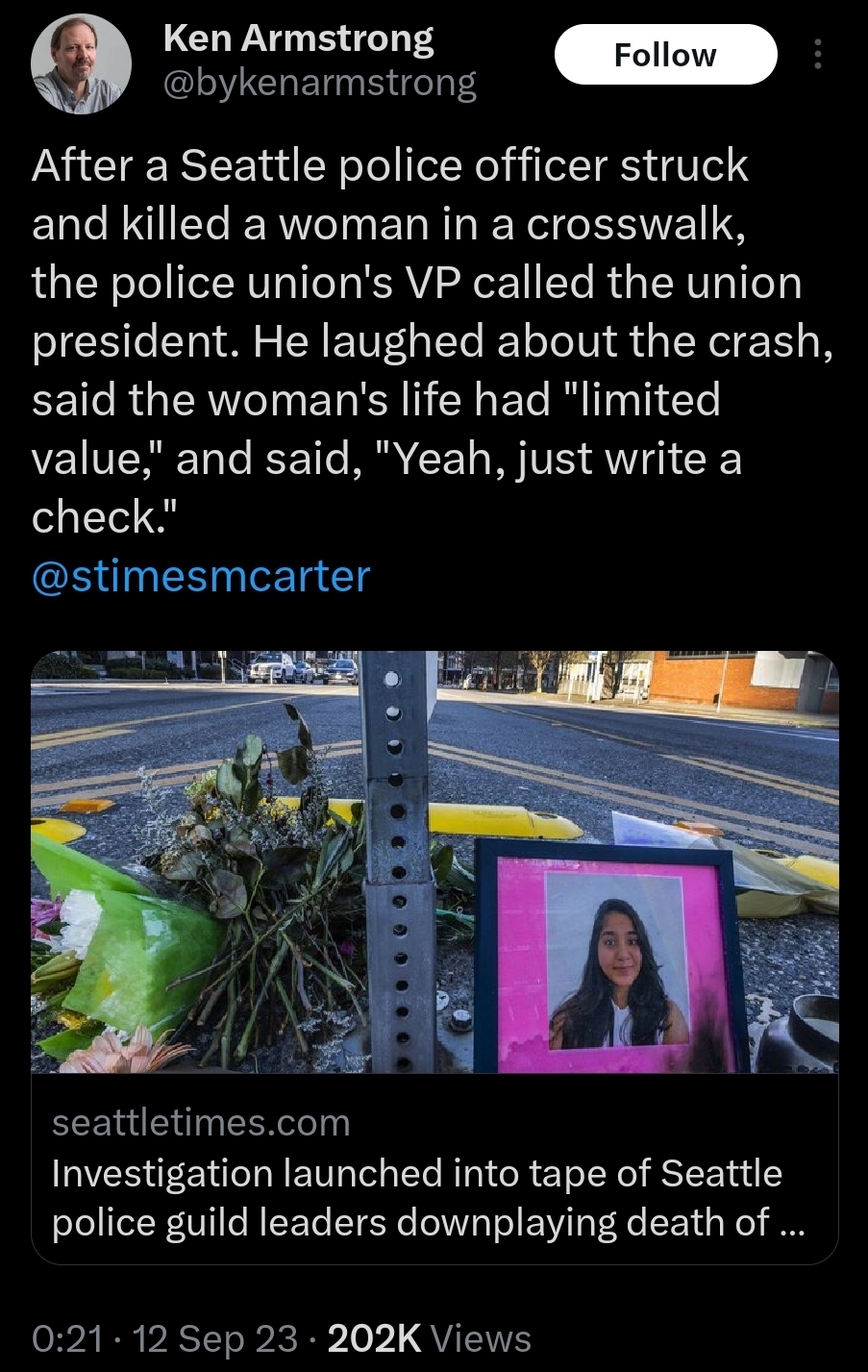Stonewall was a riot — but in some cities, Pride officials have banned “political” groups and welcomed cops. Now activists are organizing radical Pride marches to show that Pride is a protest, not just a party.
In 2016, Toronto was preparing for its annual Pride march. For the first time, Canada’s prime minister, Justin Trudeau, would attend alongside the thousands in the parade, with Black Lives Matter (BLM) as guests of honor. But BLM was angry, after years of seeing Blockorama — the only Pride month event for black queers — moved further from the march, even as police were welcomed at the parade. Objecting to their presence, BLM blocked the march for thirty minutes.
This cop involvement especially mattered because Toronto Pride had first begun in 1981 as a protest against a police raid on four bathhouses in the city. That February, officers armed with crowbars and sledgehammers had arrested over two hundred fifty gay men in “Operation Soap.” Black activists who participated in that first Pride were back in 2016 and were joined by both younger protesters and indigenous drummers in bringing the march to a halt. Faced with the protests, Toronto Pride’s executive director, Mathieu Chantelois, signed off on BLM’s demand not to allow the police to return in future — but then backtracked, claiming he had only done so to get the march moving again. After widespread criticism, Chantelois resigned; next time around, the police float was noticeably absent.
Toronto is hardly the only city where police have joined Pride. In a similar action in Britain last year, activists from Lesbians and Gays Support the Migrants (LGSM) broke through the barriers at London’s Pride march to stage a die-in. Holding funeral bouquets and draped in pink veils, they held up the march for twenty-three minutes — one minute for each person that had died in police custody since 2020 — to protest metropolitan police officers joining the parade.
One participant in the protest, Ink, explains, “I watched friends cheer on the police at London Pride, despite understanding their role in oppressing queer people. In the wake of Black Lives Matter, the presence of police at pride became especially unconscionable and we felt it was important to reclaim Pride as a space hostile to the presence of the state and its violence.”
Criticisms of mainstream Pride, made by queer participants like Ink who would prefer to see it returned to its roots in protest, have been bubbling under the surface for years. In 2001, Sylvia Rivera, a transgender activist who cofounded Street Transvestite Action Revolutionaries alongside fellow Stonewall riots veteran Marsha P. Johnson, called modern Pride “a big smokescreen.” Baulking at how corporations use Pride to present themselves as virtuous — what we now call pinkwashing — she mourned a modern Pride that only believes in the “almighty dollar,” stating “this is no longer my Pride.”
Gay rights have progressed, but activists still debate assimilation versus liberation — whether queer people should adapt to the norms and values of wider society or else change society to one that doesn’t privilege certain queer identities. Indeed, as Pride events have become mainstream, so too have certain versions of fitting in. Equality for some LGBTQ people means the freedom to marry, adopt kids, or even to get a well-paying job at an arms company with the same rights and protections as a straight colleague. That is lauded as progress whilst queers who can’t — or don’t want to — obey such norms continue to be marginalized.
Corporations and the state use diversity and inclusivity in this way to wash themselves clean. At this year’s Pride in Washington DC, arms industry giant Lockheed Martin drove a sponsored float through the city, much to the disgust of socialists and queer activists. This year in London, big oil was the target of protests as activists picketed the annual LGBTQ awards sponsored by BP, Shell, BNP Paribas, HSBC, Santander, Amazon, and Nestlé. Days later, this July 1, five activists from Just Stop Oil were arrested after jumping in front of BP’s float and halting London’s Pride parade, reminding onlookers that there will be no pride on a dead planet.
In recent years, Reclaim Pride groups sharing these criticisms of contemporary Pride celebrations have sprung up from Thessaloniki, Greece, to Oslo, Norway, and New York City. Some groups have tried to reclaim Pride by protesting, as BLM and LGSM have. Others have chosen opt out and create their own celebrations that stay true to Pride’s roots in a riot against police violence.
In 2019, as preparations were underway for the fiftieth anniversary of the Stonewall riots, activists in New York City organized an opposing Queer Liberation March instead. The official parade ran for twelve hours because there were so many corporate floats, notes Paul Nocera from New York’s Reclaim Pride Coalition. He told Jacobin how activists had become disillusioned with Pride — and the way acceptable queerness was policed by letting in some people and shutting out others: “The barricades don’t just contain people, they set up an entertainment dynamic where the people on one side are the audience and the people on the inside are the entertainment. This is a march, we’re not the entertainment,” he explains. “It really gives so much control over the message, the method, the anger. All the aspects of what we’re trying to do in our march get squashed . . . the cops want to have a march that doesn’t mean anything, that doesn’t make any complaints.”
For activists in New York, it was important to have a protest with radical politics to mark the anniversary. Each year since, they have held one on the same day as New York’s official Pride parade. Sometimes — Nocera told me — he gets disillusioned and exhausted, “It’s really tough because we do this every year and I don’t see anything changing — so what the hell are we marching for? But I was reminded that this is the moment when the community gathers together and link arms. Whether were faced outward and yelling and screaming or faced inward and having a teary eye, it’s still the gathering of the community, and that’s hugely important,” says Nocera. “To not have a march, to not have any radical gathering of people and spirits, that would be a huge loss.”
Over in England, Sheffield Radical Pride (SRP) took things a step further and organized the city’s only Pride march this year, scheduled for July 22 to coincide with Tramlines music festival when tens of thousands descended on the city. In 2018, the previous organizers declared the event was a march of “celebration, not protest.” They banned political groups from taking part and demanded banners and placards be inspected for approval to avoid causing offense. This sparked outrage from many in the queer community, who criticized Pride Sheffield for conveniently forgetting the previous fifty years of history. Since the pandemic, Sheffield has struggled to organize a Pride and 2023 marks the third year the council has not funded one.
Over winter, a group of young, largely transgender activists started conversations about how their organizing could reach the wider city and decided they should step in and organize this year’s event. They want to turn Pride back into a street movement they hope those at the Stonewall Inn in 1969 could be proud of. A month before the march, SRP announced cops and corporations were banned. “It’s exciting and it’s fun . . . I’m glad that we have the opportunity to make Sheffield’s only Pride one that is genuinely radical and one that is free of corporations and cops,” says Alex, one of the organizers.
This year, the theme for the Queer Liberation March in New York was “Trans + Queer; Forever Here!” Nocera says trans people have been at the forefront of organizing the march for years, but they felt in 2023 trans liberation needed special attention. The American Civil Liberties Union (ACLU) is currently tracking 491 anti-LGBTQ bills in the United States, and a large number of those attack trans people in various ways such as limiting their access to health care and preventing social transition or education about trans people in schools. Some have already passed laws attempting to limit drag performances and prevent cross-dressing. In New York, where trans people led the Stonewall riots, Nocera says the focus of this year’s march has given a sense of “continuing the legacy of Stonewall which is protest, resistance and resilience as a community.”
Organizers of Sheffield’s trans-led march have also seen the recent attacks on the trans and queer community from both far-right street mobilization and the UK government. One of the recent attacks from the British state came from the Tories’ so-called equalities minister, Kemi Badenoch. In April, she announced plans to change the legal definition of “sex,” which could see the trans community lose vital rights and protections.
For the trans community, pride has to be a protest — because pretending they can safely celebrate their identity simply isn’t an option. Across the UK, grassroots Trans Pride marches have appeared, with the largest held annually in London. Another of their organizers, Matt, tells me that the vitriol targeted at trans people is the first step to revoking everyone’s rights: “This pushback and backlash against trans rights is a gateway to repealing more equalities and targeting more minorities. It’s being done by some people in the name of feminism and women’s rights but really, these people are partnering with fascists.” He adds, “Rights aren’t this permanent thing once you’ve achieved them — they can also go away.”
In making Sheffield Pride a protest, Matt and Alex hope honest conversations can be had about queer liberation and the challenges it faces: “We’re not putting on this façade about how everyone’s super-accepting and how some company is going to sell you products and hire you and therefore homophobia is over,” says Matt. “We’re not going to radicalize everyone who comes. But we can tell people how it is for queer people now and we can’t be silenced through threats over funding or permissions.”
As groups like Sheffield Radical Pride and the Reclaim Pride Coalition continue organizing marches, we can hope Pride is slowly returning to something Sylvia Rivera might recognize — and be proud of.








 Another crakkka down
Another crakkka down 